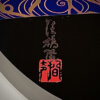Tawaraya Sōtatsu’s “Dance and Music Screen”
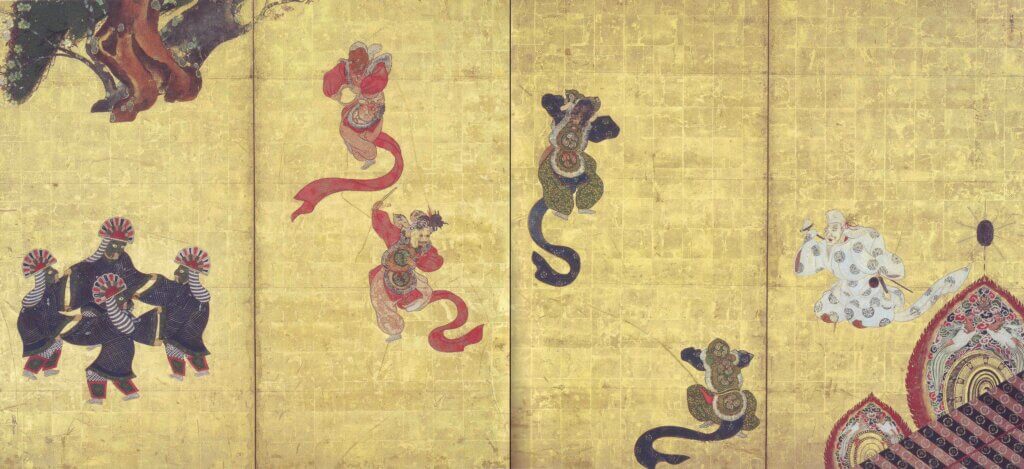 This is the “Dance and Music Screen” (Bugaku-zu Byōbu), a work was created by Tawaraya Sōtatsu in his later years. This piece depicts scenes of dance and music, with the lower right corner showing the backstage area. The backstage is depicted with drums shaped like flames. The work shows the characters dancing to the music being played backstage.
This is the “Dance and Music Screen” (Bugaku-zu Byōbu), a work was created by Tawaraya Sōtatsu in his later years. This piece depicts scenes of dance and music, with the lower right corner showing the backstage area. The backstage is depicted with drums shaped like flames. The work shows the characters dancing to the music being played backstage.
The central figures, dressed in green and red, are placed diagonally across from each other. Outside of them, other figures in red and green are similarly placed diagonally. Further out, a white figure and a group of four green figures are placed diagonally as well, with the pine tree in the upper left and the backstage in the lower right also positioned diagonally. All elements are arranged so that the intersections of these diagonal lines converge at the center, creating a sense of rhythm throughout the work.
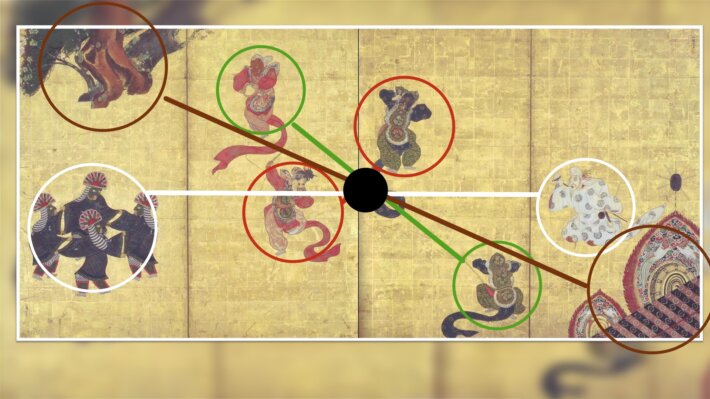
Additionally, the characters’ gazes are depicted in a way that guides the viewer’s eye in a circular pattern, bringing movement to the entire scene.
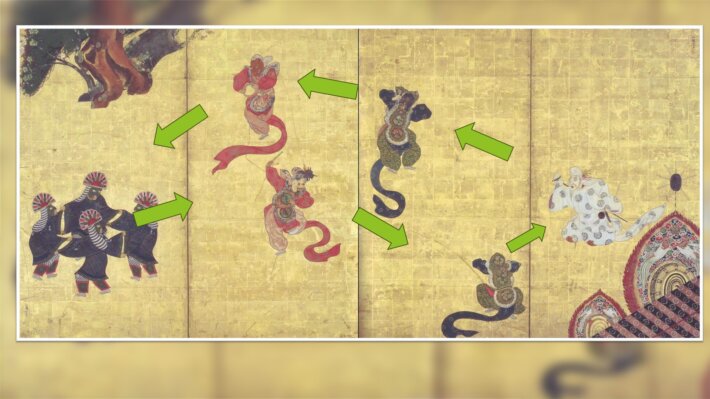
All these motifs are arranged in parallel lines. The slanted angle of the backstage in the lower right is parallel to the line connecting the white and green figures on the left. Similarly, the line connecting the green and red figures on the left is parallel, as is the line connecting the red figure and the group of four figures. The angle of the pine tree on the far left is also parallel to these lines, creating a unique arrangement of motifs.
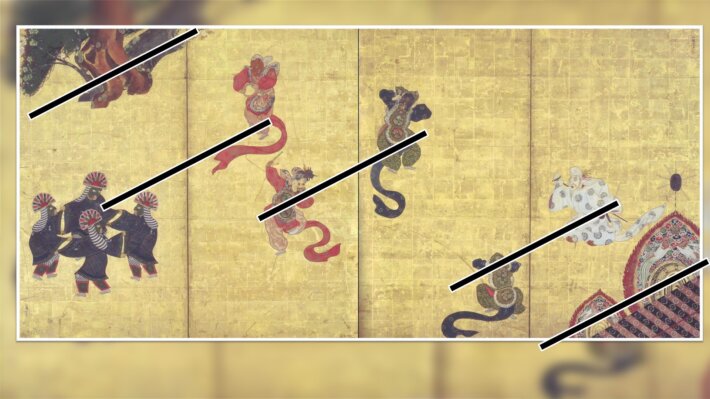
An intriguing aspect of this work is that it is a replication of other existing works. When Tawaraya Sōtatsu created this piece, the theme of “Dance and Music” was very popular. In fact, another “Dance and Music Screen” remains at the Rinnō-ji Temple in Tochigi Prefecture.

The characters depicted in Tawaraya Sōtatsu’s “Dance and Music Screen” closely resemble those in the Rinnō-ji Temple screen.
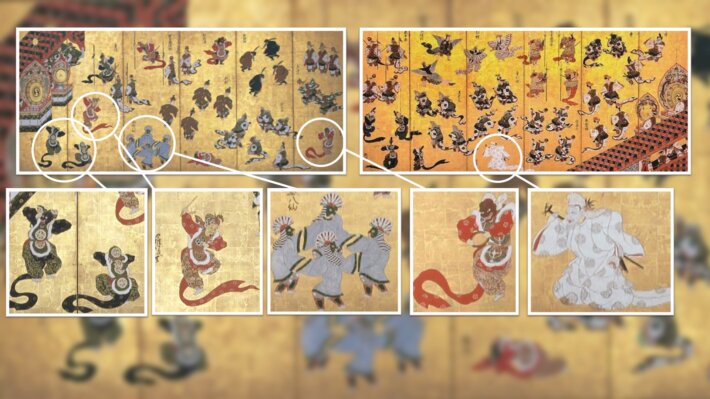
Tawaraya Sōtatsu extracted elements he liked from the work at Rinnō-ji Temple or other similar works and combined them in his own unique arrangement to complete this “Dance and Music Screen.”
Tawaraya Sōtatsu utilized his exceptional skill in arrangement and design sense to incorporate decorative elements into his paintings, creating unique works. His creativity and technique are highly appreciated even today.

